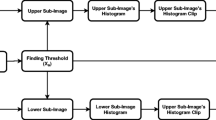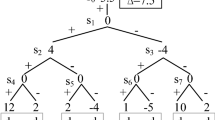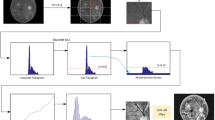Abstract
Medical image enhancement is considered a challenging image-processing framework because the low quality of images resulting after acquisition and transmission seriously affects the clinical diagnosis and observation. In order to improve the medical image visual quality, a novel medical image enhancement algorithm that is based on contrast adaptive histogram equalization and pelican optimization algorithm is proposed in this work. The estimation process using our proposed model improves the efficiency of the operation and provides superior results in terms of image quality and contrast. There are three steps in the enhancement process. The primary step includes medical image generation using a Text-to-image generative model. Secondly, the estimation of the clip-limit, which controls the enhancing performance. Finally, the operation of enhancing the medical images using our proposed method. The simulation experiments prove that our proposed algorithm achieves superior performance qualitatively and quantitatively, compared with the state-of-the-art experimental methods, Upon a thorough examination and comparative analysis of performance parameters. Furthermore, the advantageous characteristic of this algorithm is its applicability in multiple types of images. Improving the quality of the medical images using our algorithm allows us to attain a superior visual impact on the processed image, and to increase the rate of conformity in the clinical diagnosis. Our proposed model illustrates the structure and forms of relevant details, contained in the medical images. This leads to an increase in overall contrast and enhances visual perception.










Similar content being viewed by others
Data availability
Dataset used would be provided by the corresponding author upon a reasonable request.
References
Verma PK, Singh NP, Yadav D (2020) Image enhancement: a review. Ambient communications and computer systems: RACCCS 2019:347–355
Ackar H, Abd Almisreb A, Saleh MA (2019) A review on image enhancement techniques. Southeast Eur J Soft Comput 8(1)
Dabass J, Vig R (2017) Biomedical image enhancement using different techniques-a comparative study. International Conference on Recent Developments in Science, Engineering and Technology. Springer, Singapore, pp 260–286
Shukla KN, Potnis A, Dwivedy P (2017) A review on image enhancement techniques. Int J Eng Appl Comput Sci 2(07):232–235
Patel P, Bhandari A (2019) A review on image contrast enhancement techniques. Int J Online Sci 5(5):14–18
Musa P, Al Rafi F, Lamsani M (2018) A review: contrast-limited adaptive histogram equalization (CLAHE) methods to help the application of face recognition. The Third International Conference on Informatics and Computing (ICIC). IEEE, pp 1–6
Gharehchopogh FS, Shayanfar H, Gholizadeh H (2020) A comprehensive survey on symbiotic organisms search algorithms. Artif Intell Rev 53:2265–2312
Ghafori S, Gharehchopogh FS (2022) Advances in spotted hyena optimizer: a comprehensive survey. Arch Comput Methods Eng 29(3):1569–1590
Gharehchopogh FS (2022) An improved tunicate swarm algorithm with best-random mutation strategy for global optimization problems. J Bionic Eng 19(4):1177–1202
Garg D, Garg NK, Kumar M (2018) Underwater image enhancement using blending of CLAHE and percentile methodologies. Multimed Tools Appl 77(20):26545–26561
Fan R, Li X, Lee S, Li T, Zhang HL (2020) Smart image enhancement using CLAHE based on an F-shift transformation during decompression. Electronics 9(9):1374
Kuran U, Kuran EC (2021) Parameter selection for CLAHE using multi-objective cuckoo search algorithm for image contrast enhancement. Intell Syst Appl 12:200051
Alwakid G, Gouda W, Humayun M (2023) Deep learning-based prediction of diabetic retinopathy using CLAHE and ESRGAN for enhancement. In Healthcare, MDPI 11(6):863
Dubey U, Chaurasiya RK (2021) Efficient traffic sign recognition using CLAHE-based image enhancement and ResNet CNN architectures. Int J Cogn Inf Nat Intell (IJCINI) 15(4):1–19
Patil SB, Patil B (2020) Retinal fundus image enhancement using adaptive CLAHE methods. J Seybold Rep ISSN NO 1533:9211
Sahu S, Singh AK, Ghrera SP, Elhoseny M (2019) An approach for de-noising and contrast enhancement of retinal fundus image using CLAHE. Opt Laser Technol 110:87–98
Dabass J, Arora S, Vig R, Hanmandlu M (2019) Mammogram image enhancement using entropy and CLAHE based intuitionistic fuzzy method. In: The 6th International Conference on Signal Processing and Integrated Networks (SPIN), IEEE, pp 24–29
Fu Q, Celenk M, Wu A (2019) An improved algorithm based on CLAHE for ultrasonic well logging image enhancement. Cluster Comput 22(5):12609–12618
Koonsanit K, Thongvigitmanee S, Pongnapang N, Thajchayapong P (2017) Image enhancement on digital x-ray images using N-CLAHE. In: The 10th Biomedical Engineering International Conference (BMEICON). IEEE, pp 1–4
Trojovský P, Dehghani M (2022) Pelican optimization algorithm: a novel nature-inspired algorithm for engineering applications. Sensors 22(3):855
Rajam YZ, Retnamony R (2022) Hybrid approach based power quality improvement. Smart Grid connected renewable Energy System using Dstatcom. A Gbdt-Poa Technique
Kumar RS, Rajesh P, Shajin FH (2022) Fault detection and diagnosis of induction motor using hybrid POA–SNNLA technique
Asim M, Daniels M, Leong O, Ahmed A, Hand P (2020) Invertible generative models for inverse problems: mitigating representation error and dataset bias. In: International Conference on Machine Learning, PMLR, pp 399–409
Singh NK, Raza K (2020) Medical image generation using generative adversarial networks. arXiv preprint arXiv:2005.10687
Cheng Z, Wen J, Huang G, Yan J (2021) Applications of artificial intelligence in nuclear medicine image generation. Quant Imaging Med Surg 11(6):2792
Croitoru FA, Hondru V, Ionescu RT, Shah M (2022) Diffusion models in vision: A survey. arXiv preprint arXiv:2209.04747
Ulhaq A, Akhtar N, Pogrebna G (2022) Efficient diffusion models for vision: a survey. arXiv preprint arXiv:2210.09292
Sha Z, Li Z, Yu N, Zhang Y (2022) Detection and attribution of fake images generated by text-to-image Diffusion models. arXiv preprint arXiv:2210.06998
Pinaya WH, Tudosiu PD, Dafflon J, Da Costa PF, Fernandez V, Nachev P, ..., Cardoso MJ (2022) Brain imaging generation with latent diffusion models. MICCAI Workshop on Deep Generative models. Springer, Cham, pp 117–126
Tuerxun W, Xu C, Haderbieke M, Guo L, Cheng Z (2022) A wind turbine fault classification model using broad learning system optimized by improved pelican optimization algorithm. Machines 10(5):407
Jino Ramson SR, Lova Raju K, Vishnu S, Anagnostopoulos T (2019) Nature inspired optimization techniques for image processing—a short review. Nature inspired optimization techniques for image processing applications, pp 113–145
Dhal KG, Ray S, Das A, Das S (2019) A survey on nature-inspired optimization algorithms and their application in image enhancement domain. Arch Comput Methods Eng 26(5):1607–1638
Cuete D (n.d.) Normal CT brain. Case study, https://www.Radiopaedia.org. Accessed 29 Dec 2022
Gaillard F (n.d.) Normal brain (MRI). Case study, https://www.Radiopaedia.org. Accessed 30 Dec 2022
Sivakumar J, Thangavel K, Saravanan P (2012) Computed radiography skull image enhancement using Wiener filter. In: International Conference on Pattern Recognition, Informatics and Medical Engineering (PRIME-2012), IEEE, 307–311
Khan TM, Bailey DG, Khan MA, Kong Y (2017) Efficient hardware implementation for fingerprint image enhancement using anisotropic gaussian filter. IEEE Trans Image Process 26(5):2116–2126
Han K, Wang Z, Chen Z (2018) Fingerprint image enhancement method based on adaptive median filter. In 2018 24th Asia-Pacific Conference on Communications (APCC). IEEE, pp 40–44
Su X, Fang W, Shen Q, Hao X (2013) An image enhancement method using the quantum-behaved particle swarm optimization with an adaptive strategy. Math Probl Eng 2013
Draa A, Bouaziz A (2014) An artificial bee colony algorithm for image contrast enhancement. Swarm Evol Comput 16:69–84
Lin SCF, Wong CY, Jiang G, Rahman MA, Ren TR, Kwok N, Wu T (2016) Intensity and edge based adaptive unsharp masking filter for color image enhancement. Optik 127(1):407–414
Ma L, Liu R, Zhang J, Fan X, Luo Z (2021) Learning deep context-sensitive decomposition for low-light image enhancement. IEEE Trans Neural Netw Learn Syst 33(10):5666–5680
Cuenca-Jimenez PM, Fernández-Conde J, Canas-Plaza JM (2021) Filternet: self-supervised learning for high-resolution photo enhancement. IEEE Access 10:2669–2685
Funding
The authors had received no funding.
Author information
Authors and Affiliations
Corresponding author
Ethics declarations
Ethics approval and consent to participate
Not applicable.
Consent for publication
Not applicable.
Competing interests
The authors declare that they have no competing interests.
Additional information
Publisher’s Note
Springer Nature remains neutral with regard to jurisdictional claims in published maps and institutional affiliations.
Rights and permissions
Springer Nature or its licensor (e.g. a society or other partner) holds exclusive rights to this article under a publishing agreement with the author(s) or other rightsholder(s); author self-archiving of the accepted manuscript version of this article is solely governed by the terms of such publishing agreement and applicable law.
About this article
Cite this article
Haddadi, Y.R., Mansouri, B. & Khodja , F.Z.I. A novel medical image enhancement algorithm based on CLAHE and pelican optimization. Multimed Tools Appl (2024). https://doi.org/10.1007/s11042-024-19070-6
Received:
Revised:
Accepted:
Published:
DOI: https://doi.org/10.1007/s11042-024-19070-6




